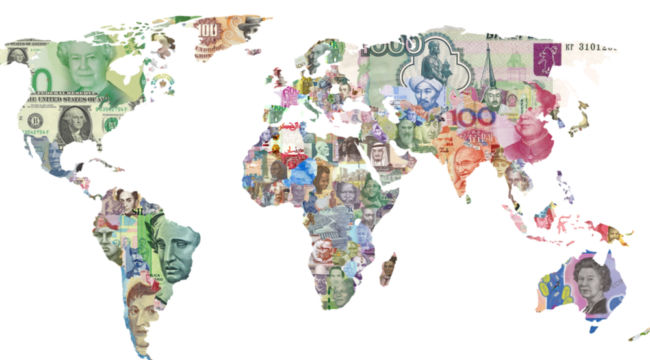Trump Says “No” to World Money
Over the course of 13 years as a media commentator and nine years as a bestselling author, I’ve had frequent occasion to state the following:
“In 1998, Wall Street came together to bail out a hedge fund. In 2008, the Federal Reserve stepped forward to bail out Wall Street. Each crisis was worse than the one before. In the next crisis, who will bail out the Fed?”
This was more than just rhetoric. It was a clinical description of a pattern of worsening crises on an approximately 10-year tempo, along with escalating bailouts.
Now the worst economic crisis in U.S. history is here and the Fed itself is in need of a bailout.
But what is the source of that bailout?
We now know part of the answer. A few weeks ago, the U.S. Congress passed a $2.2 trillion bailout bill called the CARES Act. This is the law that provided $349 billion in small-business loans, which are forgivable if the employer does not lay off its employees.
That fund has dried up already with most businesses getting either no money or not enough to survive more than a few weeks.
Also buried in that law was a $425 billion bailout fund for the Treasury to recapitalize the Fed. Since the Fed operates like a bank, they will leverage that $425 billion of new capital into $4.25 trillion of new money printing to buy corporate debt, municipal bonds, mortgages and other assets in order to keep liquidity in the system.
Still, that’s also a temporary solution when many more trillions of dollars of new money will be needed.
U.S. GDP is expected to lose an annualized $6 trillion or more in output in the second quarter. I estimate that 50% of retail and 90% of office rents aren’t being paid right now. Many small businesses will fail and probably never reopen.
I had always suggested that the IMF has the only clean balance sheet and would be the only source of liquidity in the world once the Fed was tapped out.
That’s exactly what we’re seeing now. The world is turning to the IMF for help. And that means printing the world money called special drawing rights (SDRs) to bail out the global financial system in the current economic and financial crisis.
SDRs were used in a small way during the 2008 financial crisis. They did not have much impact because the quantity was relatively small (about $250 billion equivalent) and it took a long time to get done. The SDRs were issued in August 2009, almost a year after the acute phase of the crisis and after a recovery had already begun.
Still, the 2009 issuance was a good dry run in preparation for the next crisis. Now the next crisis is here.
The world has never been so deeply in debt.
Societies with low debt burdens are robust to disaster. They can mobilize capital, raise taxes, increase spending and rebuild when the crisis is over.
But heavily indebted societies are much more brittle. They just don’t have that flexibility. Meanwhile, panicked creditors demand repayment that causes distressed sales of assets, falling markets and default.
That’s the situation we’re facing today.
Still, nothing this momentous happens without a heavy injection of politics, especially while Donald Trump and his “America First” agenda are in place.
A normal SDR printing exercise requires that the total SDRs be issued to all IMF members in proportion to their voting rights in the IMF. This means that U.S. adversaries such as Iran and China would get part of the bailout money along with more needy countries in Africa and Latin America.
The U.S. is now holding up the new issuance of new SDRs for exactly this reason.
We’ll see how this impasse gets resolved. Perhaps new SDRs will be issued right away. But as the depression lingers and the Fed’s impotence is exposed, the issue of printing a trillion SDRs will be back on the table.
China may have their own conditions such as a diminution in the role of the dollar as a global reserve currency. The U.S. may be more desperate when the time comes. Either way, this issue will not go away.
SDRs were originally intended as a kind of “paper gold.” Once the IMF starts the printing presses, investors will probably favor real gold as the proper antidote.
Below, I show you why gold is coming back to the global monetary system. As you’ll see, It can be done either in an orderly fashion, or a chaotic fashion. Read on.
Regards,
Jim Rickards
for The Daily Reckoning



Comments: